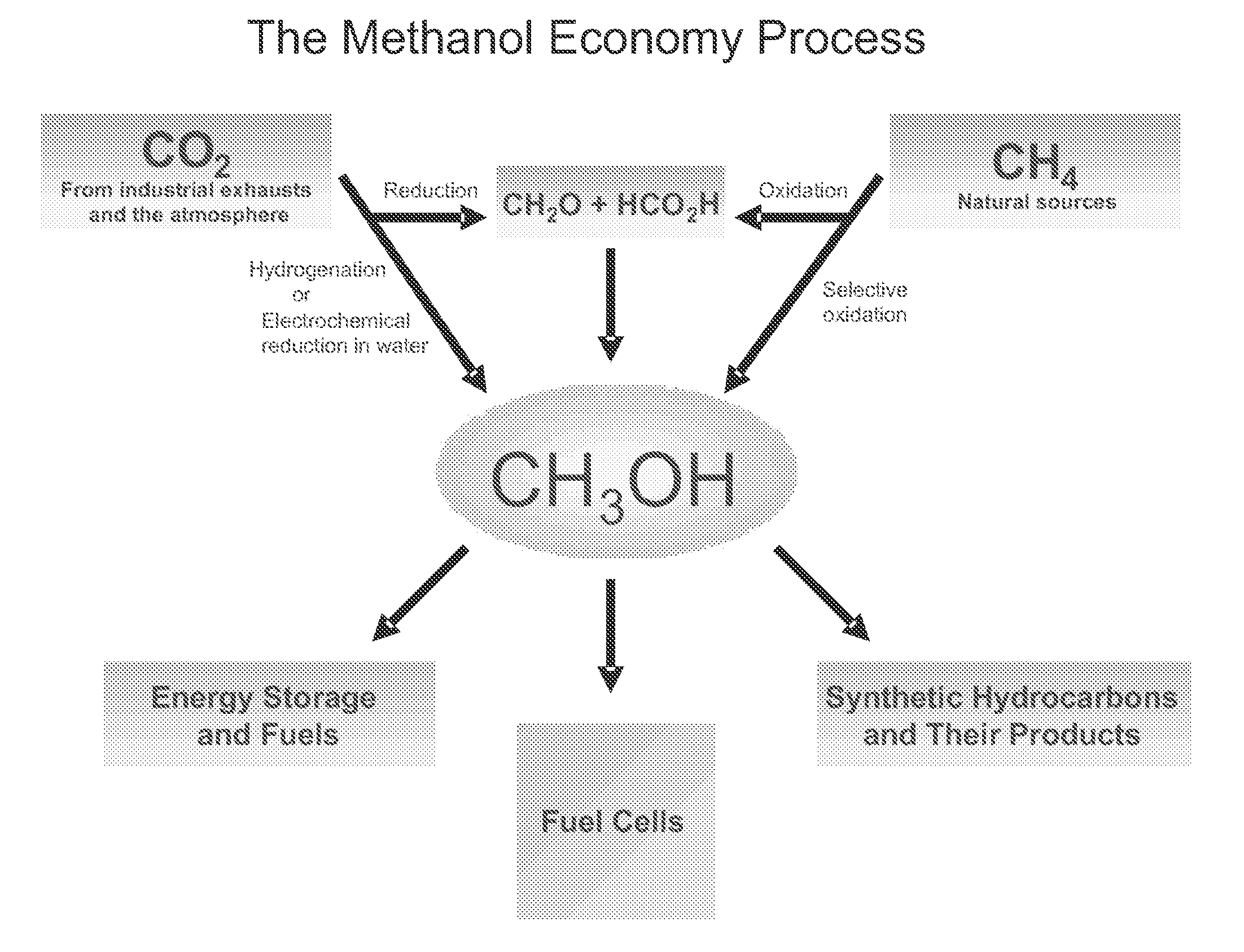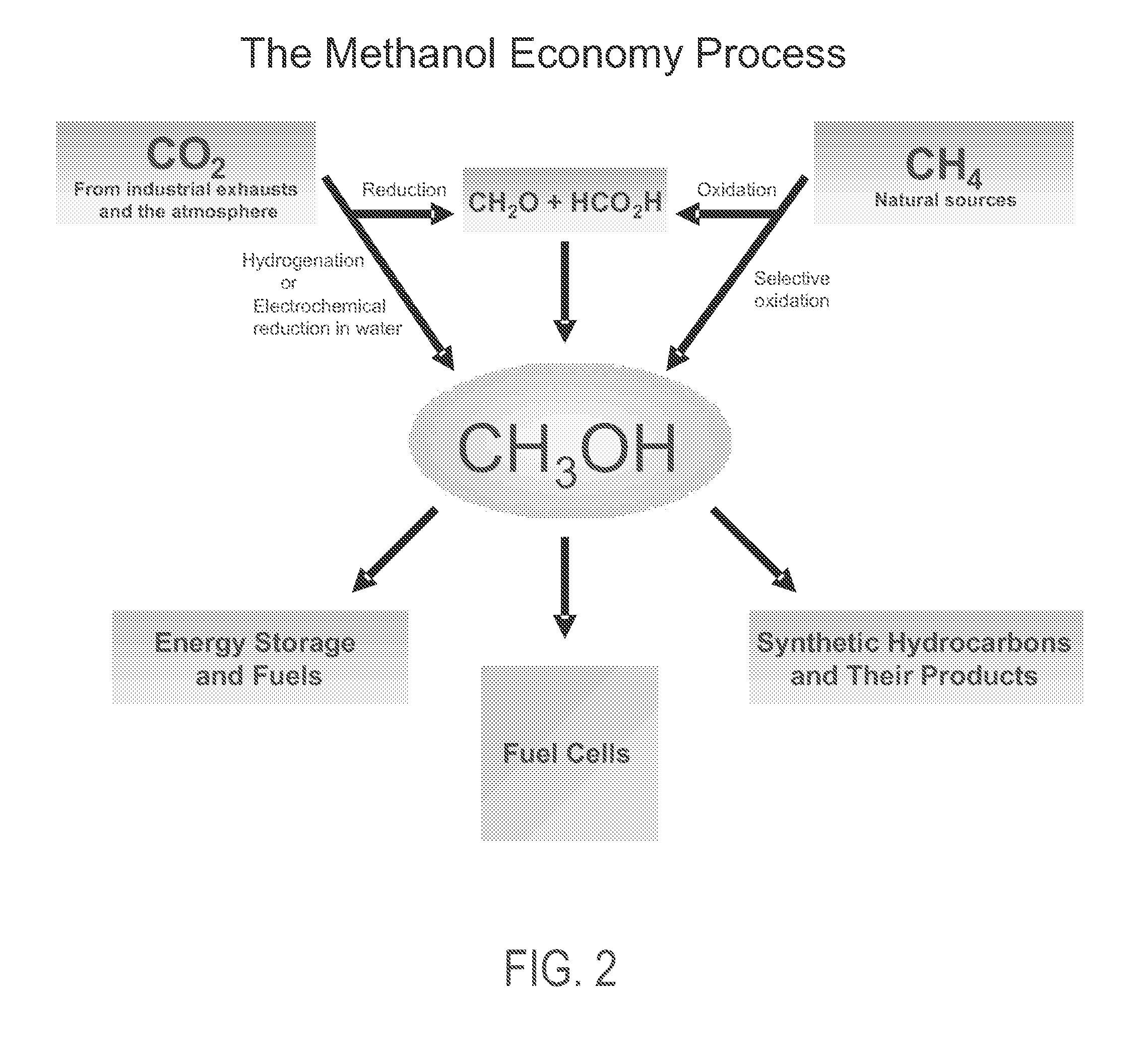Electrolysis of carbon dioxide in aqueous media to carbon monoxide and hydrogen for production of methanol
a technology of carbon monoxide and methanol, which is applied in the field of electrolysis of carbon dioxide in aqueous media to carbon monoxide and hydrogen for the production of methanol, can solve the problems of finite reserve, present fossil fuels, irreversible combustion and contribution to air pollution and global warming, and free hydrogen
- Summary
- Abstract
- Description
- Claims
- Application Information
AI Technical Summary
Benefits of technology
Problems solved by technology
Method used
Image
Examples
example 1
[0081]In a divided electrochemical cell, using tetrabutylammonium halides, preferentially tetrabutylammonium bromide as the electrolyte over gold electrode (cathode) in aqueous methanol medium at either −1.5V or −4V vs. Ag / AgCl reference electrode, CO2 is reduced and water is electrolyzed to an optimal 1:2 mixture of CO and H2 at the cathode. Pure oxygen as well as some bromine is produced at the anode.
example 2
[0082]In a divided electrochemical cell, using, aqueous 0.1M KHCO3 as the electrolyte CO2 is reduced at the gold cathode at −3.2V vs. Ag / AgCl reference electrode CO2 is reduced and water is electrolyzed to an optimal 1:2 mixture of CO and H2 suitable for methanol synthesis. The total faradaic efficiences for CO and H2 production add up to 100%. Pure oxygen is produced at the anode. Organic ionic liquids based on imidazole and related derivatives with bicarbonate counter ions also serve as good electrolytes.
example 3
[0083]In a divided electrochemical cell in which anode cell compartment and cathode cell compartment is separated by a membrane electrode assembly (MEA) consisting of anion conducting (such as OH—, HCO3— or CO32−) polymeric membrane firmly sandwiched between catalyst coated cathode (preferably gold deposited on conducting Toray carbon paper or cloth) and catalyst coated anode (Pt deposited on conducting Toray carbon paper or cloth), at a potential of ˜−3.0 V vs Ag / AgCl reference electrode, CO2 is reduced and water is electrolyzed at the cathode side to an optimal 1:2 mixture of CO and H2 suitable for methanol production. Pure oxygen is produced at the anode. The use of such membrane electrode assembly (MEA) separator ensures facile separation of cathode and anode products.
PUM
| Property | Measurement | Unit |
|---|---|---|
| Electric potential / voltage | aaaaa | aaaaa |
| Pressure | aaaaa | aaaaa |
| Ratio | aaaaa | aaaaa |
Abstract
Description
Claims
Application Information
 Login to View More
Login to View More - R&D
- Intellectual Property
- Life Sciences
- Materials
- Tech Scout
- Unparalleled Data Quality
- Higher Quality Content
- 60% Fewer Hallucinations
Browse by: Latest US Patents, China's latest patents, Technical Efficacy Thesaurus, Application Domain, Technology Topic, Popular Technical Reports.
© 2025 PatSnap. All rights reserved.Legal|Privacy policy|Modern Slavery Act Transparency Statement|Sitemap|About US| Contact US: help@patsnap.com



